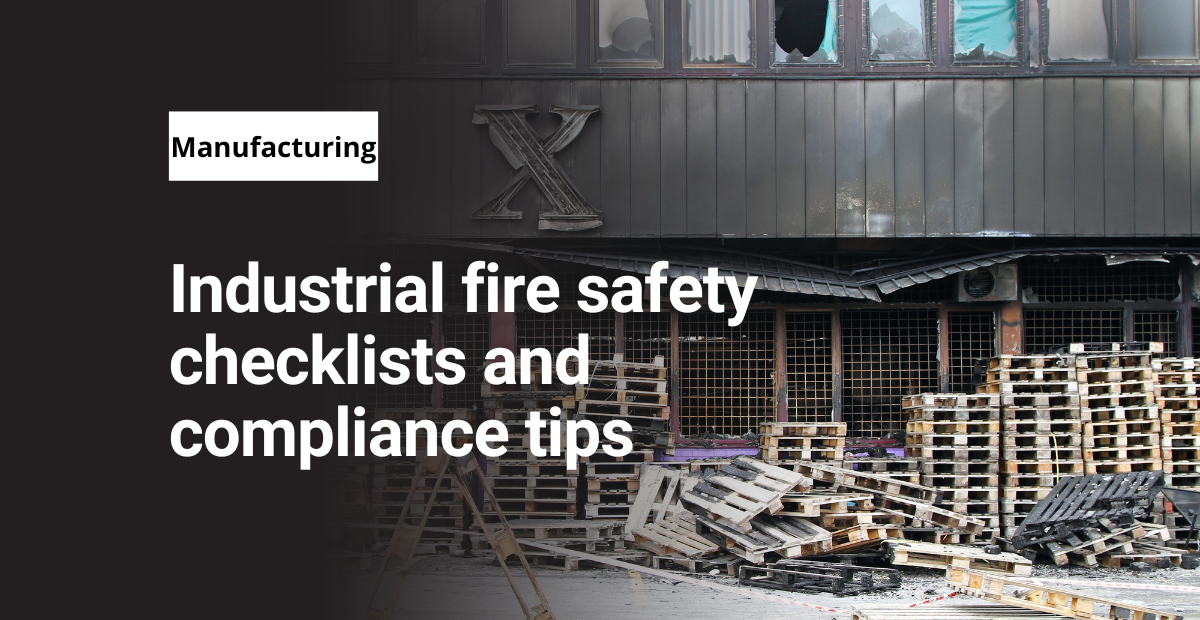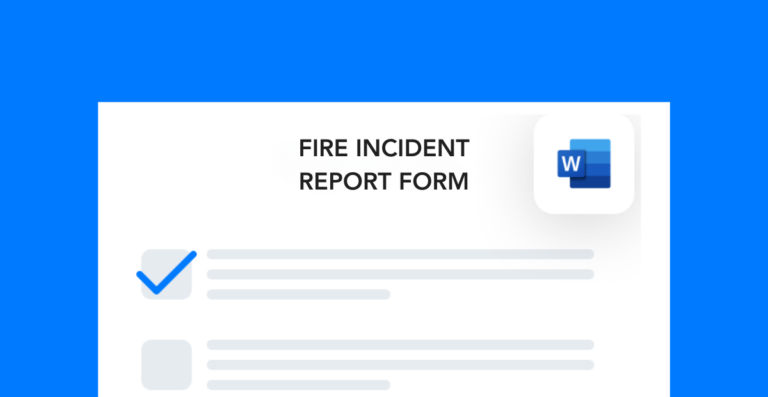Fire safety compliance involves developing a detailed fire prevention plan and emergency action plan for employee evacuation and employee involvement in firefighting if a fire breaks out.
Employers should address fire prevention strategies if workplace situations require it, not just what actions to take in an emergency. Depending on the specific industry workplace situation and hazards, a fire safety audit could focus on some or all these safety plans and procedures.
Free form!
Document workplace fire incidents with this Word template from our resource library.
Industrial fire safety checklists
A fire prevention plan must inform workers of the potential fire hazards of their jobs and the planned procedures, as well as the names or job titles of employees responsible for maintaining equipment to prevent or control sources of ignition or fires.
You must share your plan with all new employees. This includes when you make modifications as well.
Fire prevention plans must:
- Include housekeeping procedures for storage and cleanup of flammable materials and flammable waste.
- Address handling and packaging of flammable waste.
- Cover procedures for controlling workplace ignition sources such as smoking, welding, and burning.
- Provide procedure of proper cleaning and maintenance of heat-producing equipment
- Store flammable materials away from heat-producing equipment.
Overall, employers should create a fire prevention plan, provide it to employees, and regularly update it. These regular checks apply to fire detection systems as well.
Fire detection systems checklist
- Have all devices received approval for use?
- Are fire detection systems and components returned to normal operating conditions as soon as possible after each use or test?
- Do you regularly inspect fire detection systems except during repairs or maintenance?
- Are fire detectors and fire detection systems tested and adjusted often enough to operate correctly and maintain reliability?
- Are the servicing, maintenance, and testing of fire detection systems performed by a trained person?
- Does fire detection equipment have protection from weather, corrosion, mechanical or physical impact
- Do fire detectors have independent support (not by their wires or tubing)?
- Do fire detection systems operate in time to control or extinguish a fire?
- Do fire detection systems provide a warning for emergency action and safe escape of employees?
- Do you prevent delaying alarms or devices for more than 30 seconds unless the delay is necessary for employee safety?
- Are the appropriate number, spacing, and location of fire detectors provided?
Fire extinguishing and alarm systems
If you use fire alarm systems, they must adhere to regulatory standards.
Fixed extinguishing systems checklist
- Are fixed extinguishing system components and agents provided that are approved for use on the specific fire hazards that they are expected to control or extinguish?
- Are employees notified and assured of their safety if a fixed extinguishing system becomes inoperable? Any defects or impairments must be fixed by trained personnel.
- Is a distinctive alarm or signaling system capable of being perceived above noise or light levels?
- Are fixed systems inspected annually and maintained in good operating condition?
- Is automatic detection equipment approved, installed, and maintained in accordance with regulations?
Portable extinguishing systems checklist
- Have the portable fire extinguishers been selected and distributed based on the types of anticipated workplace fires and the size and degree of hazard that would affect their use?
- Are the provided extinguishers maintained, fully charged, operating correctly, and always kept in designated places except during use?
- Are extinguishers located and identified to be readily accessible to employees without subjecting employees to possible injury?
- Is an annual maintenance check performed on all extinguishers?
- Is a monthly visual inspection performed on all extinguishers?
Alarm systems checklist
- Does your plan include a way to alert employees, including disabled workers, to evacuate or take other action, and how to report emergencies?
- Can alarms be heard, seen, or otherwise perceived by everyone in the workplace?
- Have you established procedures for sounding emergency alarms in the workplace?
- Are all employee alarm systems in proper working condition, except when undergoing repairs or maintenance?
- Are the servicing, maintenance, and testing of employee alarms done by adequately trained persons?
Emergency action plans
When required, you must develop an emergency action plan that remains available for employee review. Also, you should require to do a plan refresher whenever you make changes. This ensures that your workers always have the most accurate information possible.
Emergency action plans must:
- Describe the routes for workers to use and procedures to follow, including procedures for evacuating disabled employees.
- Account for all evacuated employees.
- Make the evacuation signal known to employees.
- Provide an employee alarm system throughout the workplace.
- Address evacuation of employees who stay behind to shut down critical plant equipment.
- Ensure the provision of emergency training.
Employers should train workers about fire hazards in the workplace and what to do in a fire emergency. If you want your workers to evacuate, you should train them on evacuation procedures. If you expect your workers to use fire-fighting equipment, you should provide the appropriate equipment and train workers to use the equipment safely.
Fire safety exit requirements
Workplaces must have enough exits suitably located to enable all employees to get out of the facility quickly to ensure safe evacuation. Considerations include the type of structure, the number of persons exposed, the fire protection available, the type of industry involved, the height and type of building, or the structure.
Exit doors should be accessible and unlocked while employees are inside. Delayed opening of exit doors is permitted only when integrating an approved alarm system into the exit door design. Exit routes from buildings must be free of obstructions and properly marked with exit signs.
If you take the steps outlined in these industrial fire safety checklists, you’re on your way to a safer, more predictable workplace. To learn more about the OSHA requirements for fire safety visit the OSHA fire safety overview page.
Other posts you might like…
No posts


